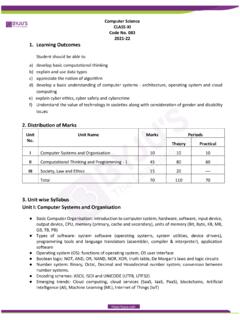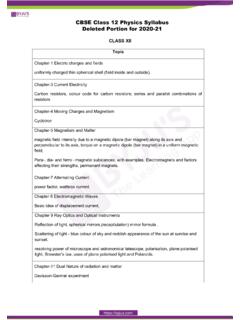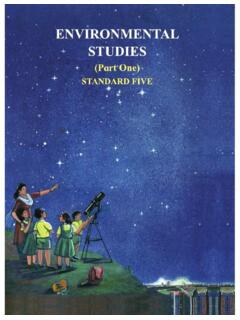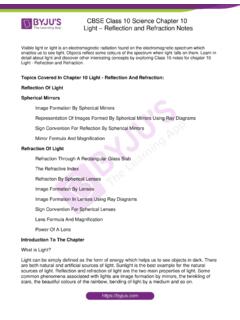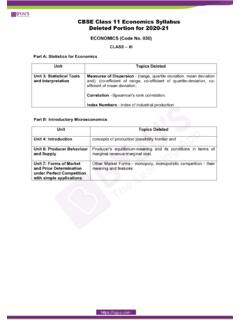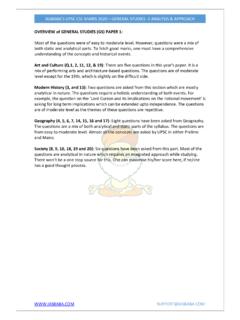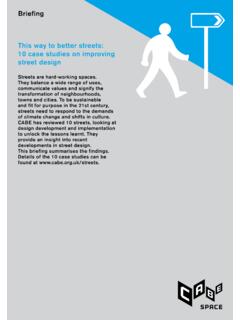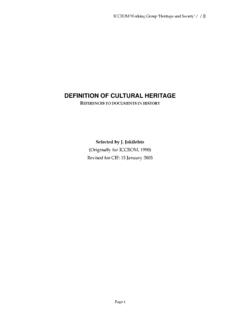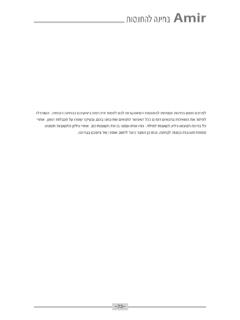Transcription of Maharashtra Board Class 7 History Textbook in English
1 STANDARD SEVENHISTORY ANDCIVICSM aharashtra State Bureau of Textbook Production andCurriculum Research, Pune - 411 QR Code given alongside and on other pages in this book can be scanned with a smartphone, which leads to link/s (URL) useful for the teaching/learning of this Coordination Committee formed by GR No. Abhyas - 2116/( ) SD - 4 Dated has given approval to prescribe this Textbook in its meeting held on :Dr Somnath RodeDr Ganesh RautFirst Edition : 2017 The Maharashtra State Bureau of Textbook Production and Curriculum Research reserves all rights relating to the book. No part of this book should be reproduced without the written permission of the Director, Maharashtra State Bureau of Textbook Production and Curriculum Research, Balbharati , Senapati Bapat Marg, Pune State Bureau of Textbook Production and Curriculum Research, Pune - 411 Subject Committee :Dr Sadanand More, ChairmanShri.
2 Mohan Shete, MemberShri. Pandurang Balkawade, MemberDr Abhiram Dixit, MemberShri. Bapusaheb Shinde, MemberShri. Balkrishna Chopde, MemberShri. Prashant Sarudkar, MemberShri. Mogal Jadhav, Member-SecretaryCivics Subject Committee :Dr Shrikant Paranjape, ChairmanProf. Sadhana Kulkarni, MemberDr Mohan Kashikar, MemberShri. Vaijnath Kale, MemberShri. Mogal Jadhav, Member-SecretaryShri. Rahul PrabhuShri. Sanjay VazarekarShri. Subhash RathodSmt Sunita DalviProf. Shivani LimayeShri. Bhausaheb UmateDr Nagnath YevaleShri. Sadanand DongreShri. Ravindra PatilShri. Vikram AdsulSmt Rupali GirkarDr Minakshi UpadhyaySmt Kanchan KetkarSmt Shivkanya PatveDr Anil Singare History and Civics Study Group :Dr Raosaheb ShelkeShri. Mariba ChandanshiveShri. Santosh ShindeDr Satish ChapleShri. Vishal KulkarniShri. Shekhar PatilShri. Sanjay MehtaShri. Ramdas ThakarDr Ajit ApteDr Mohan KhadseSmt Shivkanya KaderkarShri.
3 Gautam DangeDr Vyankatesh KharatShri. Ravindra JindeDr Prabhakar LondheCover and Illustrations :Shri. Devdatta Prakash BalkawadeCartographer :Shri. Ravikiran JadhavCoordination : Mogal JadhavSpecial Officer, History and CivicsVarsha SarodeSubject Assistant, History and CivicsTranslation :Shri. Aniruddha ChitnisShri. Sushrut KulkarniSmt. Aarti KhatuScrutiny :Dr Ganesh RautProf. Sadhana KulkarniCoordination : Dhanavanti HardikarAcademic Secretary for LanguagesSantosh J. PawarSubject Assistant, EnglishTypesetting : DTP Section, Textbook Bureau, PunePaper : 70 GSM CreamwovePrint Order : N/PB/2017-18 : M/s. Rajmudra Prakashan (P) Ltd., AurangabadProduction :Sachchitanand AphaleChief Production OfficerPrabhakar Parab, Production OfficerShashank Kanikdale, Assistant Production Officer Publisher : Vivek Uttam Gosavi, Controller Maharashtra State Textbook Bureau, Prabhadevi, Mumbai - 400 Students, You have studied History and Civics in Environmental Studies Part I and II from Std III to Std V.
4 The subjects History and Civics are taught separately Std VI onwards. Both the subjects are included in a single Textbook . We are happy to place this Textbook of Std VII in your book is designed in such a way that you will understand the subject clearly, find it interesting and you will get motivated by the work done by our ancestors. We want you to gather knowledge as well as joy when you study it. For that, we have provided coloured pictures and maps in this Textbook . Please study each chapter in this Textbook carefully. If you do not understand any part, ask your teachers and parents to explain it. The additional information given in the boxes will add to your knowledge. If you consider that History is an interesting subject and is our friend, you will definitely like this subject. In the History section, we have explained the History of Medieval India.
5 The Textbook has been designed by focusing upon the place and role of Maharashtra in the making of Medieval India. When you study this Textbook , we expect that you will develop an awareness of being a citizen of India, and also a sense of the Civics part, we have introduced the Constitution of India. The background for creating a new Constitution, the Preamble to the Constitution, the Fundamental Rights and Directive Principles in the Constitution are covered in this part. It explains in simple language, that the government system in our country is run as per the Constitution, laws and rules. We have provided many projects so that your learning becomes more activity-oriented. You will enter the next standard with the feeling that you are the future citizens of the country and will build the future of our country.
6 When we study History , we come to know about the achievements of our ancestors. When it is coupled with the study of Civics, we understand our duties towards building a nation and a society. That is why the two subjects are studied together. PuneDate : 28 March 2017(Dr. Sunil Magar)DirectorMaharashtra State Bureau of Textbook Production and Curriculum Research, have already taught the History and Civics Textbook for Std VI. In this Textbook for Std VII the History of Medieval India is special feature of this presentation is that it focuses on Maharashtra . Even though our State is part of the Republic of India, if we study History from the perspective of Maharashtra , we will understand the position, role and contribution of Maharashtra in the History of India, and the students will develop a more mature national feeling.
7 They will understand what our ancestors have done for the nation and it will enhance their awareness of their own responsibilities and duties towards the nation. In this respect, the foundation of Swaraj by Chhatrapati Shivaji Maharaj in the seventeenth century is very important. To understand the foundation of Swaraj, the situation in India and Maharashtra before the rise of Chhatrapati Shivaji Maharaj should be understood first, so that one gets a perspective on the History of India. That has been our policy while designing this book. We have discussed how, after the demise of Shivaji Maharaj, Maharashtra faced the attacks on his Swaraj and protected it. After they had repulsed the attacks, the Marathas expanded the boundaries of Maharashtra and occupied most of India.
8 The next part covers the expansion of Swaraj into an empire. We all know that the British conquered India and ruled here but it is important to understand how Maharashtra was in the forefront in stopping the British. The British had to compete with the Marathas and they had to conquer India by battling with the Marathas. This evokes a sense of our strength and duty. It is expected that teaching-learning should awaken this feeling in the students minds. This view-point is expressed pictorially on the cover showing the expansion of the Maratha power with the help of a broad outline map of the Civics part, we have introduced the Constitution of India. As it is not possible to teach this subject in one year, it is distributed across two standards.
9 In this standard, the emphasis is on the need for a Constitution, the values enshrined in the Constitution, the Preamble, Fundamental Rights and Duties and the Directive Principles. The administrative machinery and the political procedures laid down in the Constitution will be taken up in Std VIII. In this sense, the Civics portion in the two standards is complimentary. It is arranged in such a way that the students will be able to understand it easily. The contents have been arranged in an innovative way. It is based on constructivism, but going even beyond, priority is given to making the students (responsible) members of the society by removing the apathy towards the political system.
10 The content has been presented in very simple language. It will increase the readability of the book. While teaching this Textbook , teachers should use newspapers, news on television, the analysis by scholars and should help create a comprehensive vision amongst students. If one studies and teaches History and Civics with reference to current affairs, it becomes more meaningful and helps in inculcating values in For Teachers Note : The following foot notes are applicable : (1) Government of India, Copyright : 2017. (2) The responsibility for the correctness of internal details rests with the publisher. (3) The territorial waters of India extend into the sea to a distance of twelve nautical miles measured from the appropriate base line.

